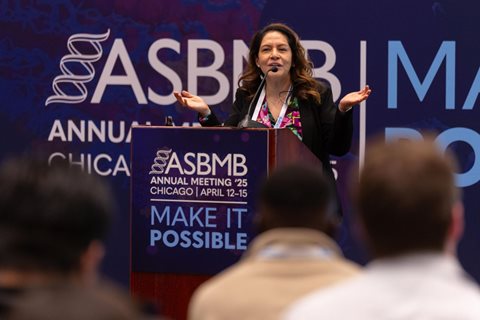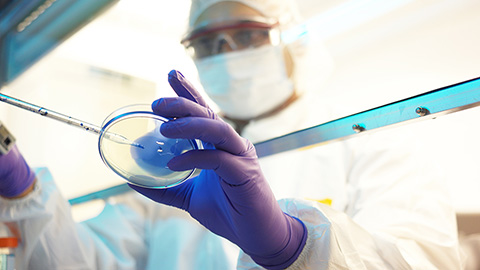How active learning affects STEM students with learning disabilities
Active learning is an instructional approach that involves engaging students with the learning process through group work, case studies, class discussions and other methods. This type of approach places a greater degree of responsibility on the learner. Students with disabilities may have unique experiences in active-learning STEM courses because most active-learning practices were designed with limited input from students with disabilities.
Researchers in the University of Georgia Franklin College of Arts and Sciences investigated how the incorporation of active-learning practices influence the learning and self-advocacy experiences of students with attention-deficit/hyperactivity disorder (ADHD) and specific learning disorders (SLD) in undergraduate science, technology, engineering, and mathematics (STEM) courses.

In a paper published in CBE—Life Sciences Education, the researchers conducted in-depth interviews with 25 STEM majors with ADHD and/or SLD (ADHD/SLD) registered with a campus disability resource center and analyzed the data using qualitative methods. Participants described how they perceived active learning in their STEM courses to support or hinder their learning and how active learning affected their self-advocacy.
Active learning could hinder the learning of students with ADHD/SLD because many accommodations that students with disabilities use were designed to be used for lecture courses.
“One common accommodation is using a note taking accommodation,” said Mariel Pfeifer, a postdoctoral research associate in the department of biochemistry and molecular biology and lead author on the paper. “Note-taking accommodations typically involve a student from the class volunteering to take notes and uploading the notes they take to a portal that the student using the accommodation can anonymously access. In a lecture course, all of the students are receiving the same information from the instructor. But when we use active-learning practices like group work, students are now working with a few other students in different places in the classroom. How does that change the notetaking process?”
When a student’s accommodations are no longer effective in an active-learning environment, that student may need to advocate for themselves with their professor and their peers.
“Both ADHD and SLD are considered non-apparent disabilities,” said Julie Stanton, an associate professor in the department of cellular biology, and senior author on the paper. “Asking for and receiving effective accommodations might be a bit more challenging, because someone won't immediately recognize that you may need an accommodation. This is where self-advocacy becomes important.”
Since the study considers the voice of STEM students with disabilities, the researchers received more in-depth responses about different active-learning techniques and were able to identify how different approaches might help or hinder student learning.
“A single active-learning practice can support successful instruction, but it could also be perceived to hinder learning,” said Pfeifer. “The heart of this research shows that it is not necessarily what type of active learning practice an instructor chooses to implement that negatively affects students with ADHD/SLD, but it is more about how they implement that practice.”
Pfeifer and Stanton hope instructors will support students with ADHD/SLD by following the recommendations from participants that are provided in the paper.
“Based on our participants’ department experiences, we created a table that highlights how instructors can use active-learning practices in a way that supports students with ADHD/SLD in their courses,” said Pfeifer. “The table gives instructors suggestions they can implement in their active-learning course today.”
This article was first published by the Franklin College of Arts and Sciences at the University of Georgia and was republished with permission. Read the original.
Enjoy reading ASBMB Today?
Become a member to receive the print edition four times a year and the digital edition monthly.
Learn moreFeatured jobs
from the ASBMB career center
Get the latest from ASBMB Today
Enter your email address, and we’ll send you a weekly email with recent articles, interviews and more.
Latest in Careers
Careers highlights or most popular articles

Building the blueprint to block HIV
Wesley Sundquist will present his work on the HIV capsid and revolutionary drug, Lenacapavir, at the ASBMB Annual Meeting, March 7–10, in Maryland.

Upcoming opportunities
Present your research alongside other outstanding scientists. The #ASBMB26 late-breaking abstract deadline is Jan. 15.

Designing life’s building blocks with AI
Tanja Kortemme, a professor at the University of California, San Francisco, will discuss her research using computational biology to engineer proteins at the 2026 ASBMB Annual Meeting.

Upcoming opportunities
#ASBMB26 late-breaking abstract submission opens on December 8. Register by Jan. 15 to get the early rate on our Annual Meeting.

Make your abstract stand out
Ensure your research is impossible to overlook. Get quick, practical reminders for crafting an abstract that attracts readers and helps you build connections at the conference.

Inside industry postdocs
As more Ph.D. scientists look beyond academia, industry postdocs offer a new kind of training, where mentorship meets mission-driven research. Fellows at Pfizer and Genentech share how these programs prepare them to translate discovery into impact.

